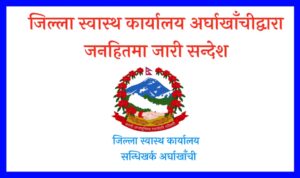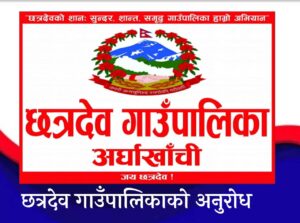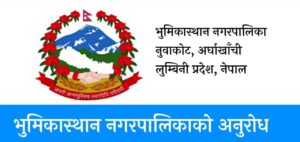When the entire country has been witnessing the scourge of the dengue virus, a high density of dengue-spreading mosquitoes has been found in Kathmandu Valley, a recent study carried out by the Epidemiology and Disease Control Division shows.
And what alarms officials is the virus-spreading vector has been found more prevalent in the areas where authorities concerned have completed search and destroy operations.
“We found the virus-spreading vector in higher densities in areas where search and destroy drive has been carried out,” said Dr Gokarna Dahal, chief of Vector Control Section at the division. “This is alarming, as a high density of the vector means high risk of further spread of infection.”
The division carried out a vector survey in all three districts of Kathmandu to study the vector’s density and type.
Officials said that both Aedes aegypti and Aedes albopictus mosquitoes have been found in the Valley, contrary to their assumption that Aedes aegypti could be responsible for the ongoing outbreak.
Experts say the search-and-destroy campaign is the most effective method to eliminate the breeding sites of dengue-spreading mosquitoes, and to raise awareness among the people to take precautions.
They say that the lackadaisical approach of the authorities concerned is responsible for the rampant spread of the virus throughout the country.
“Local units apparently think they have completed their duty just by conducting the search-and-destroy drives once or twice,” said Dr Prabhat Adhikari, an infectious disease expert. “The drive should be continued until the risk goes away.”
With the country implementing federalism and the three tiers of governments—federal, provincial and local—coming into existence, the health-related duties and responsibilities of the government have been also divided among three tiers.
And taking preventive measures including running search-and-destroy drives is part of the local government’s job.
Lack of funds, technical knowledge and seriousness about the risks among the officials serving in local units has hindered the goal to curb the spread of the virus, said Adhikari.
“The disease control agency under the Ministry of Health and Population cannot do much on its own, as responsibilities have been divided among the three tiers of government,” Adhikari added. “Local units too are underfunded and lacking in technical know-how.”
Some local units placed banners and organised marches deploying students to create awareness about the risks, but that too is insufficient in controlling the spread of the virus, experts say.
During the first, second, third, and fourth waves of the Covid-19 pandemic also, neither the federal and provincial nor local governments worked effectively to control the spread of the virus. Doctors say authorities learned nothing from the mistakes as well as the experience of the coronavirus pandemic.
The disease control division has recommended the Health Ministry declare a dengue epidemic for coordinated measures among the authorities concerned, but officials at the ministry say they do not have any plan to declare an epidemic. The division had also forwarded a set of guidelines on indoor fogging and spraying mosquito repellents to the Department of Health Services but no such measures have been taken so far.
“Infection of the virus will not stop by declaring the dengue disease an epidemic. But cases of infection are coming down and we hope the disease will come under control once the temperature starts to decline,” an official at the Health Ministry said, requesting anonymity as he is not authorised to speak to the media.
Experts warn that the ongoing spread of the virus could continue until November.
Dengue is a mosquito-borne disease transmitted by female Aedes aegypti and Aedes albopictus mosquitoes. The same vector also transmits chikungunya, yellow fever, and Zika viruses, according to the World Health Organisation.
So far, over 30 people have died and over 23,000 people have been infected with the virual fever, which has spread in 76 out of 77 districts in the country. Officials said some additional deaths are being verified to confirm if infection of the virus is responsible or not.
This is the first time so many people have succumbed to the virus. Experts say reported cases of dengue could be just the tip of the iceberg, as around 90 percent of the infected people do not show any symptoms.
Asymptomatic people can easily spread the disease through vectors (disease-carrying mosquitoes), according to experts.
Mild to high fever, severe muscle pain, rashes, severe headache, and pain in the eyes are some of the symptoms of dengue, according to doctors. Dengue cases have been detected every month since January. The virus has already become endemic to Nepal, public health experts say.
Nepal also witnessed a major dengue outbreak in 2019 where six people died and over 17,000 were hospitalised. The outbreak, which had started in the pre-monsoon period from Dharan, spread to 68 districts.
The World Health Organisation says there is no specific treatment for severe dengue, but early detection and access to proper medical care can lower the fatality rate.




